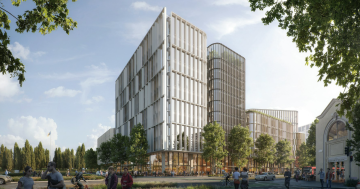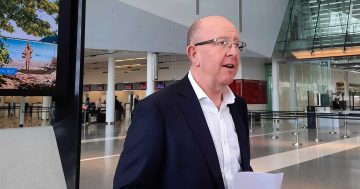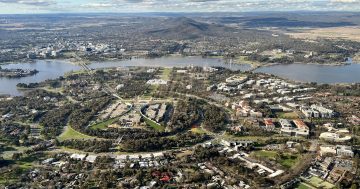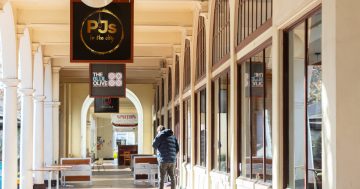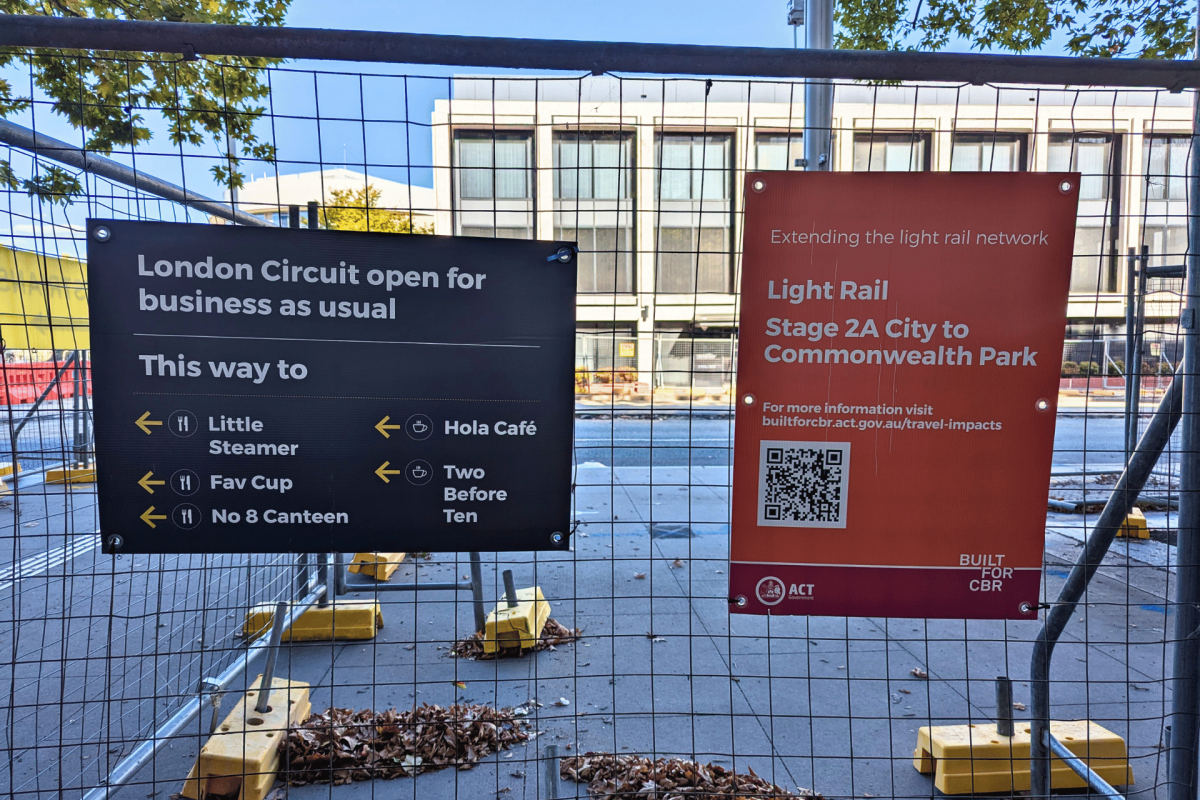
Going into the city is a challenge these days. Photo: Tenele Conway.
The reported death of the Canberra CBD may be greatly exaggerated, according to the sanguine view of National Capital Authority chief Karen Doran.
With Civic a construction site, Commonwealth agencies fleeing to Barton and working from home baked into work agreements, fears have never been greater for the CBD.
But Ms Doran takes a big picture, long-term view.
Speaking as a panellist at the Property Council’s Mid-Year Office Report launch, Ms Doran described the move to Barton as “coming back home into the parliamentary zone”. She rejected claims that it had hurt the CBD.
“We’re seeing both sides of the Lake growing, which is wonderful,” she said.
Ms Doran said what was happening in the city, such as light rail construction, would make the CBD a better place, but she acknowledged that there were immediate downsides.
“This probably isn’t an answer that people want to hear, but the city is going through a significant growth phase at the moment, a lot of infrastructure and works and light rail’s coming through,” she said.
“That naturally impacts on the look and feel of the city and people’s desire to go in, even maybe to go into work.”
Ms Doran said her eyes were on the long-term and ensuring, together with the City Renewal Authority, that the infrastructure and offices being built made for a more attractive city in the next five to 10 years.
Nonetheless, the challenges remain for the CBD, with office supply forecast to grow but demand not matching it, creating the risk of stranded assets, especially some of the lower-grade buildings.
Contributing to this is that much of the Commonwealth’s big procurement briefs have been completed and that any left will require new buildings that meet Net Zero requirements.

NCA chief Karen Doran: CBS will be better. Photo: PCA.
Charter Hall’s Paul Dorney suggested that the Commonwealth could mandate a certain number of agencies to be located in the CBD, similar to its decision to base a major department in Tuggeranong.
“We’re at a crossroads. If the city becomes vacant of government agencies and everyone moves to Barton, what do we do?” he said.
But the one thing Civic had that Barton didn’t was amenity.
“I know everyone’s excited about getting a new home in the Triangle, looking at the Hill and all the rest of it, but there’s nothing there,” Mr Dorney said.
“We’re in front of one of our tenants the other day, and the first thing she said is, ‘I can walk across the road to Coles, I can get milk and bread on the way home and feed the teenagers’.
“You can’t do that as far as I know in Barton at the moment, unless someone’s going to build a Coles or something.”
But Mr also told a telling anecdote about showing Japanese visitors one of Charter Hall’s buildings but finding the place empty at 3 pm.
“Where are all the people?” they asked.
He noted that in Sydney, where a Minns Government directive had brought workers back to the city, numerous activities were also being implemented to encourage people to return to the office.
But Australian Strategic Property Advisers managing director Stephen Oxford said that was not likely to happen in Canberra where working from home arrangements were enshrined in work agreements and much loved by public servants.
He said the impact had been devastating for small businesses
“A lot of these buildings are leased, they’re just empty, and it’s the mums and dads that own the coffee shop underneath that are going under, and the small businesses that are suffering.”
Mr Oxford said there were 36,000 businesses in the ACT, but 90 per cent of them had less than 19 employees.
“They’re the guys that are hurting right now,” he said.
He said the city should be the heart of the national capital, but if government policy was that public servants didn’t need officers, that called into question what Canberra’s purpose was.
Mr Oxford agreed with Ms Doran that the city infrastructure work was disruptive, but in the long term it would be good for the CBD.
He warned that many buildings no longer suitable for government use would need to be repurposed, which would require changes to tax settings and planning constraints to facilitate this.












